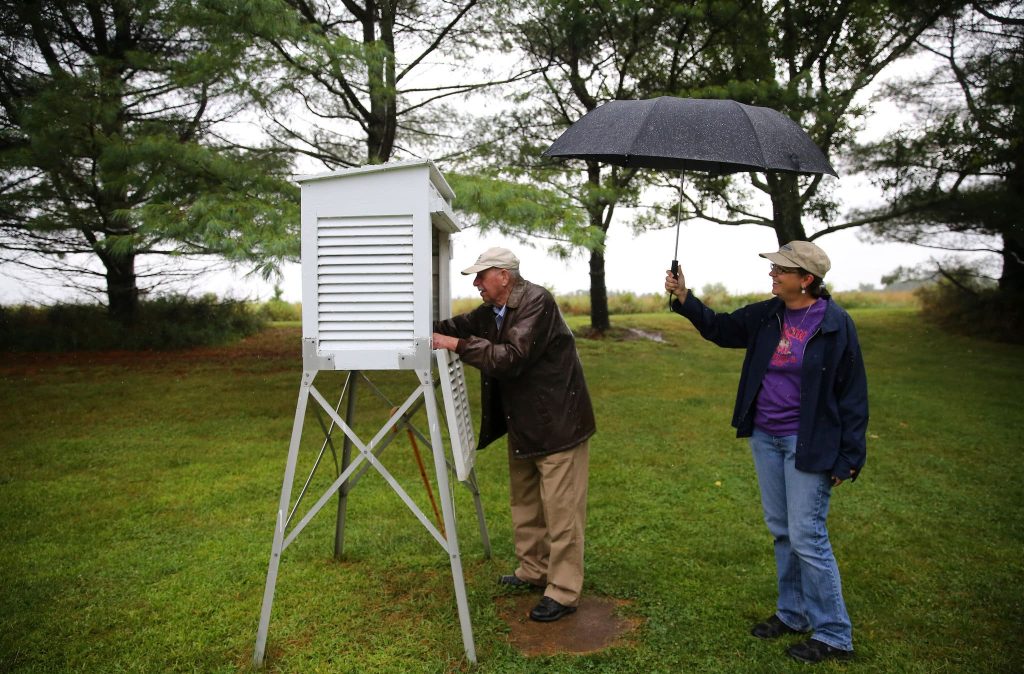Have you ever paused to consider how weather forecasts shape your daily decisions? From deciding whether to carry an umbrella to planning a weekend getaway, accurate weather predictions are indispensable. Behind these forecasts lies a rich history of observation and science, dating back to ancient civilizations that observed the skies for agricultural and religious reasons. Fast forward to the 17th and 18th centuries, and we witness the birth of systematic weather observation, laying the groundwork for modern meteorology. National Weather Observers Day, celebrated on May 4, pays homage to the tireless efforts of individuals who have dedicated their lives to this field. From the Admiralty Observers in 1854, who collected data to safeguard ships at sea, to today's network of over 12,000 volunteer observers aiding the National Weather Service, the evolution of weather observation is a testament to human curiosity and ingenuity. This day not only celebrates the advancements in meteorological science but also reminds us of the critical role weather observers play in our daily lives, safeguarding not just property but lives.
Key Takeaway
Timeline
Day Activities
-
Kick off National Weather Observers Day with a sunrise weather-watching hike. Participants can observe and record early morning weather patterns, learning to identify cloud types and wind directions. This hands-on activity not only pays homage to the tradition of weather observation but also immerses enthusiasts in the beauty of meteorology at dawn.
-
Midday brings an opportunity for a virtual weather station tour. Weather buffs can dive into the world of professional meteorology, exploring the high-tech tools and instruments used in modern weather forecasting. This behind-the-scenes peek is perfect for those curious about how data from volunteer observers contributes to national weather services.
-
As the day winds down, community weather discussions take center stage. Locals gather, either in person or online, to share personal weather stories and observations, fostering a sense of camaraderie among weather enthusiasts. These discussions highlight the critical role of human observation in complementing technological advancements in meteorology.
Interesting Facts
1. Origins in Ancient Times
Weather observation dates back to ancient civilizations for agriculture and religious reasons.
2. Admiralty Observers Network
In 1854, the British established a pivotal weather observation network for maritime safety.
3. U.S. National Weather Service
The NWS started in 1891, relying on over 12,000 volunteer observers.
4. Celebrating a Century
National Weather Observers Day began in 1991, marking the NWS's 100th anniversary.
5. Evolution with Technology
Despite technological advances, human weather observers remain irreplaceable for their unique insights.
Why We Love This Day
- Celebrating Unsung Heroes
Who doesn't love a shout-out to the unsung heroes behind the scenes? National Weather Observers Day does just that by tipping its hat to those dedicated souls who keep an eye on the skies. These folks aren't just hobbyists; they're the backbone of meteorology, making sure we're not caught off guard by Mother Nature. From ancient civilizations using weather patterns for farming to today's tech-savvy observers, this day is a big thank you for their tireless work. Without them, imagine being unprepared for that sudden downpour or unexpected heatwave!
- A Nod to History and Progress
Let's take a walk down memory lane, shall we? Weather observation has come a long way from its humble beginnings. Back in the day, it was all about survival, but now, it's a sophisticated science that saves lives. National Weather Observers Day isn't just about giving props to current weather watchers; it's also about acknowledging the leaps and bounds made in meteorology. From the Admiralty Observers' network in 1854 to today's army of over 12,000 volunteers in the U.S. alone, this day celebrates progress and the relentless pursuit of accuracy in weather forecasting.
- Inspiring Future Generations
Lastly, National Weather Observers Day isn't just a pat on the back for current observers; it's a beacon of inspiration for future meteorologists. By highlighting the critical role these observers play, the day encourages budding scientists to consider a path in meteorology. It's a reminder that their passion for weather can lead to a fulfilling career, contributing to the safety and well-being of communities around the globe. So, here's to hoping this day sparks a curiosity in young minds about the wonders of weather observation and the impact they can make in the world.
Past & Future Dates
| Month | Day | Year |
|---|---|---|
| MAY | 4 | 2022 |
| MAY | 4 | 2023 |
| MAY | 4 | 2024 |
| MAY | 4 | 2025 |
| MAY | 4 | 2026 |
| MAY | 4 | 2027 |
| MAY | 4 | 2028 |
FAQ
What does a weather observer do?
A weather observer is tasked with collecting, recording, and analyzing weather conditions. Often, they delve into research about their observations, predict shifts in weather patterns, and play a crucial role in determining if weather warnings should be issued.
